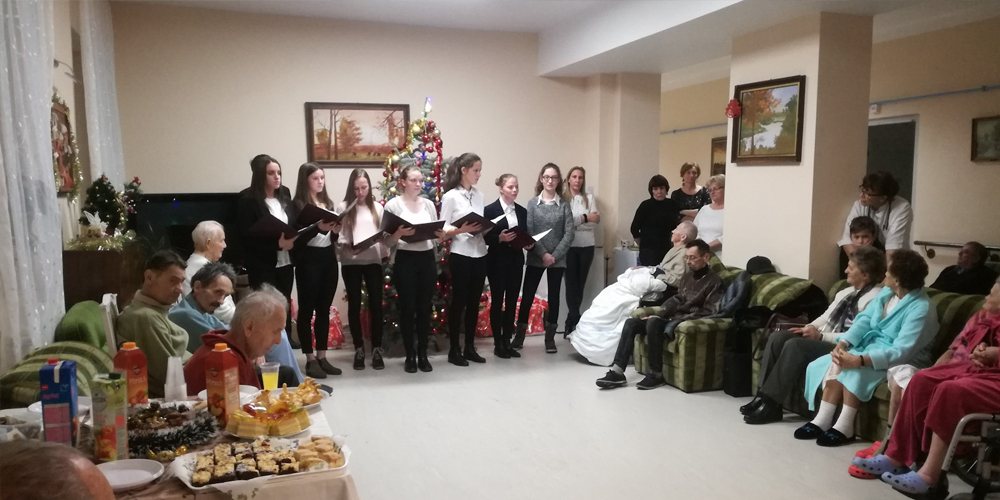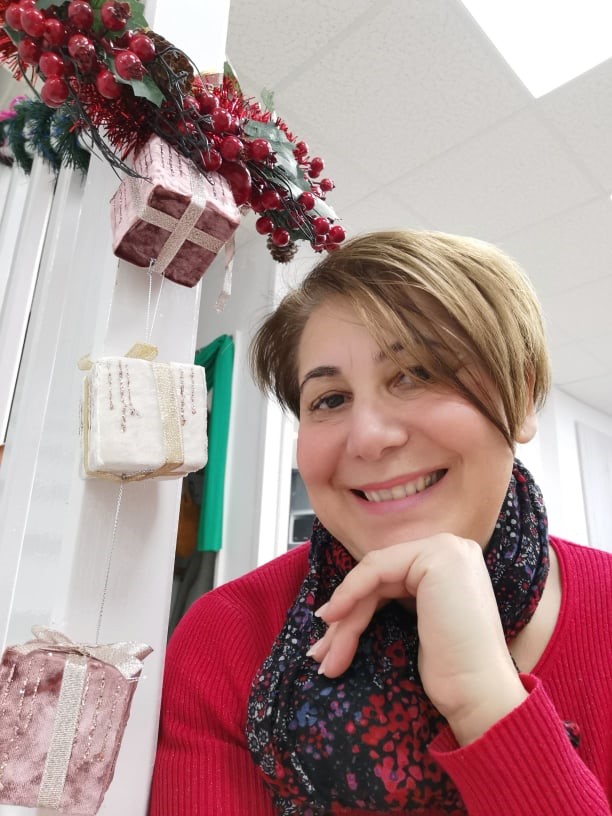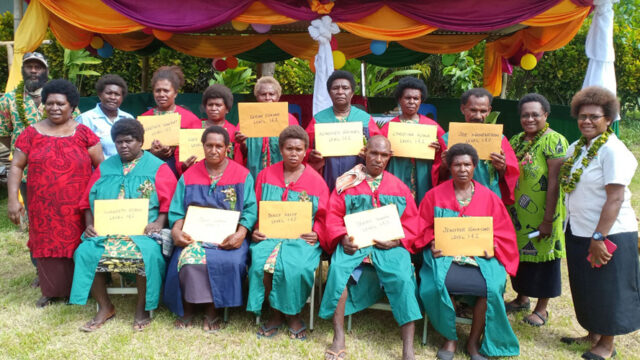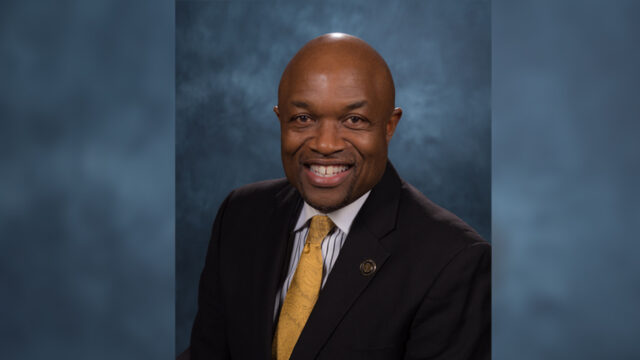The pastor turned chaplain in Hungary is ministering in one of the hardest places.

Erzsébet Feketéné Trankusz began working as a pastor in the Tisza Conference of the Hungarian Union in 2015. As well as fulfilling her pastor’s role in the Adventist Church, she did some voluntary chaplaincy work in the hospice ward of the Borsod-Abaúj-Zemplén County Central and University Teaching Hospital in Miskolc.
The hospice is there for patients in the end-stages of illness, the majority of them suffering some form of cancer. While in the hospice, patients are given support physically and mentally to deal with their end-of-life process. The care is provided by doctors, nurses, physical therapists, psychologists/mental hygienists, social workers, pastors, dietitians, and trained volunteer helpers. The team provides complex physical, mental, social, and spiritual support. When asked why she got involved with the chaplaincy work, Erzsébet said, “My answer is very simple: the faith that I have received is priceless, which I think needs to be passed on to others.”
At the end of 2019, the Tisza Conference was unable to find pastoral work for Erzsébet in or near her home, and for family reasons, she was unable to move. But when one door closes, another opens. Having been a volunteer at the hospice, Erzsébet had the opportunity to get more involved there. The director of the hospital gave her the responsibility of being the chaplaincy coordinator for the hospital.

There was, however, one small challenge. Chaplains are provided financial support by the state, because they usually come from Hungary’s major denominations, with whom the government has made agreements. While the Seventh-day Adventist Church is a recognized denomination, it does not currently have such an agreement with the government for the payment of chaplains. Therefore, the Tisza Conference and Hungarian Union looked at the finances and together applied for support funding through the Trans-European Division Mission Board to provide Erzsébet a salary for 2020.
For Christmas 2019, Erzsébet arranged for children and youth from her local Adventist congregation to provide a program of music and readings to the hospice patients.
She seeks to visit every patient in the 22-room hospice weekly. This is, on average, 44 patients and their families. Giving support to the patients and their families involves mental health care and counseling, being there for the patients in their last hours, providing spiritual support and prayer, and presenting grief and loss seminars for families after a patient dies.
Erzsébet also organizes worship services on Saturdays (Sabbaths) and coordinates the schedule of services conducted by clergy of other Christian denominations. “Our patients are very thankful when they are able to participate in worship services. They appreciate these events, which may be the last occasion for them when they can listen to, understand and accept God’s invitation.”
The hospice ward’s Chief Medical Officer commented that Erzsébet is “able to give patients an understanding and loving presence, listening, facing, and accepting a seemingly hopeless future—in many cases, achieving a reduction in anxiety and fear of death. We consider the service she performs to be extremely important and will continue to demand it in the future.”
The majority of patients and their families are open to receiving chaplaincy support. Still, Erzsébet tells of one young mother who asked for no visits from psychologists, pastors, or volunteers and no mental health support. Her wishes were respected, so Erzsébet limited herself to praying for the young woman. One day, walking past her open ward door, Erzsébet stopped, went in, introduced herself, and although she knew of the request for no visits, simply asked if there was anything the young woman needed help with. It was a hot summer day, and the patient asked for a bottle of cold water to be opened, as she couldn’t do it herself. As Erzsébet was leaving the room, the young woman asked her to come again. The request for visits was readily met, and Erzsébet had the opportunity to pray with the young woman a couple of times before she passed away.
Very often, when patients realize there is no cure for them, they are angry and overwhelmed with a feeling of helplessness. Often when visited, they will talk about themselves and their stories, and Erzsébet often feels the anger they have toward God because they believe that their illnesses and sufferings are God’s doing. That is why Erzsébet takes time to be with them and open the Bible’s picture of God to them, so when the “last” days come, they will end their lives reconciled to God, with the hope of eternal life.
Meeting around 600 people a year, Erzsébet has many stories she can share, but one that is close to her heart is about an elderly man who had divorced his wife and abandoned his family about 40 years earlier. He asked if his family could be found because he wanted to apologize and say goodbye to them. After four weeks of trying, Erzsébet had not been able to make any contact, and the elderly man’s condition was worsening daily.
One day her phone rang, and it was one of his children. After a few minutes of conversation, the daughter said that neither she nor her siblings were willing to meet their dad. She did agree, though, that they could be contacted with news of their father from time to time.
After several phone calls, the daughters finally agreed that they would visit the following weekend. Before that happened, their father’s health worsened, and Erzsébet called the family with the sad news and then sat and read to him from the Bible and prayed with him.
Shortly afterward, his family arrived. The man apologized to them, and he finally received the forgiveness he had longed for. He couldn’t speak anymore but signed to them, and they remained with him until he died 20 minutes after they arrived. Erzsébet commented later that the man had died with hope. “He died with the belief, as Job 19:25 says, that our Redeemer lives and that He shall stand at last on the earth,” she said.
The original version of this story was posted on the Trans-European Division news site.








